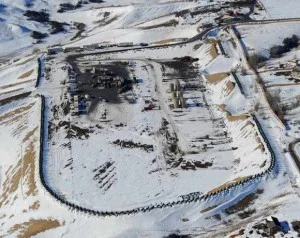Newfield reported first quarter earnings and along with financial results the company reported company record wells in the Bakken.
Wells completed in the Bakken produced more than 3,100 boe/d and wells completed in the Three Forks yielded more than 2,400 boe/d. The impressive production rates drove Bakken production growth estimates from 15% to 25% in 2013.
“Our production in the first quarter of 2013 exceeded our beginning of the year expectations and we are ‘on target’ to deliver on our expected 39% growth in domestic liquids volumes for the year (adjusted for asset sales in 2012),” said Lee K. Boothby, Newfield CEO. “We kicked off the year with better than expected first quarter volumes in our Cana Woodford, Williston and Uinta Basin operating regions and posted quarter-over-quarter production growth in our domestic operating regions.”
Newfield posted cost improvements and production growth across many of its core areas of development. Costs are down in the Eagle Ford and record drilling times were achieved in the Uinta Basin in Utah.
Read more at newfield.com





